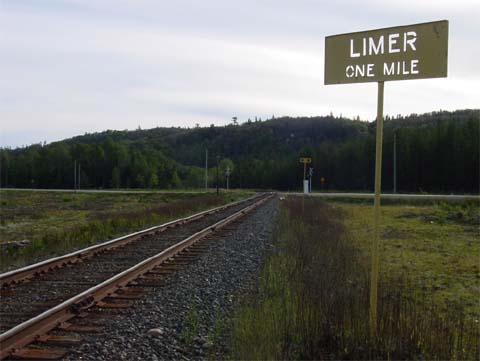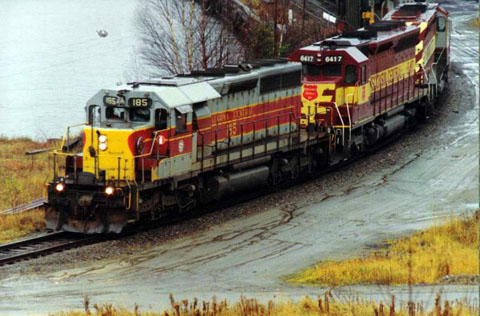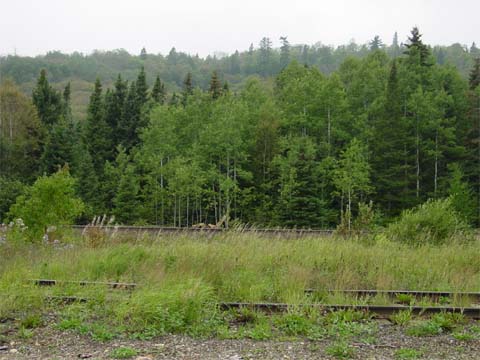Railway Crew Heard Crash
 Algoma Country - by Lawren Harris
Algoma Country - by Lawren HarrisIn the days following the disappearance of the F-89, search crews received many tips from the public about information they felt might be relevant to the disappearance of the F-89. As the F-89 was presumed lost over Canadian waters of Lake Superior, the search effort was lead by the RCAF's Eastern Area Rescue Co-ordination Centre from Trenton, Ontario who had set up temporary search headquarters at the USAF base at Kinross, Michigan. Their report on the unsuccessful search and rescue mission "Operation SAR Scorpion" refers to two clues received which were considered reliable. One was from a mail courier who thought he had seen wreckage of an aircraft in the water in the Cut River Bridge area of Michigan. Michigan state police searched this area three times and discounted the sighting as rocks. A second clue was reported as the sighting of wreckage on the side of the mountain on the eastern shore of the lake about 80 miles north of Kinross. This area was searched with negative results.
 Sign for Limer Siding on Algoma Central Railway
Sign for Limer Siding on Algoma Central RailwayNo other mention of clues was made in the SAR report, but two newspaper articles referred to reports that Algoma Central Railway crews had heard a crash on the night of the F-89 disappearance. The two articles do not mention the specific location but the article in a Madison newspaper states that the USAF made a sweep over the north shore of Lake Superior following the reports from the Algoma Central Railway crews located about 100 miles north of Sault Ste. Marie, Ontario. A newspaper article that referred back to the incident, published in the Sault Star on October 31, 1968 stated:
"November 28, the search by US and Canadian forces aircraft was called off, but reopened Nov. 30, following a statement by Algoma Central Railway workers that they heard a crash about 100 miles north of here shortly after Kinross lost contact."
 Algoma Central Railway - runs through wilderness east of Lake Superior
Algoma Central Railway - runs through wilderness east of Lake SuperiorA second search for the missing F-89 was launched in May 1954 after further information was received by the Renne O. Wilson, the father of the radar operator. A report on the second search was prepared by the 49th Air Rescue Squadron, based in Selfridge Air Force Base in Michigan. It states that the search was reopened based on reports of a low flying aircraft in the vicinity of Limer, Ontario. The information had been received and investigated at the time of the original search mission but it was determined to have no relative bearing on the incident because of time differentiation. Since that time, the individual who had reported the low flying aircraft stated he might have been mistaken in the time.
Was this individual one of the member's of an Algoma Central Railway crew who had reported hearing a crash? The railway crew was reported as located 100 miles north of Sault Ste. Marie. Today, Limer, Ontario is nothing more than a siding of the Algoma Central Railway and it is located about 95 miles north of Sault Ste. Marie, Ontario. It is unfortunate that the report provides no other information on the witnesses account. Did the witness see a low flying airplane or did he just hear the low flying airplane. If he heard the low flying airplane, he should have been able to distinguish whether it was a powered by a propeller or a jet engine as the two sounds are easy to distinguish. If the sound was from a propeller-powered plane then this would certainly rule out an association with the missing F-89. If it had been a jet powered engine, then it almost certainly would have been from the missing F-89 as all other F-89's flying that night were flying at high altitudes (20,000 feet or more) way out over Lake Superior, not over northern Ontario.
 Limer, Ontario - Algoma Central Railway Siding
Limer, Ontario - Algoma Central Railway SidingThe sound of a crash from the railway crew also raises questions. Presumably this was not the sound of a tree falling or a bear moving through the bush, as the railway workers would be familiar with these sounds. It must have made a much different sound like those associated with the crashes of planes, trains or automobiles. Presumeably, these reports originated at a site along the Algoma Central Railway at or near Limer, Ontario. It should have been possible to identify the source of the crash sound if it involved an automobile or train. If it had been another airplane besides the F-89 then there should have been reports of another missing plane. It is possible that the reports were a case of public mischief, although it seems unlikely that several individuals would conspire in this manner when the lives of two airmen were at stake.
What other possibilities are there? Perhaps they were all just imagining they heard a crash and saw or heard a low flying plane.
It is possible that whatever was seen or heard that night near the railway siding at Limer, Ontario was not related to the disappearance of the F-89, but perhaps this does add another dimension of mystery to the incident.